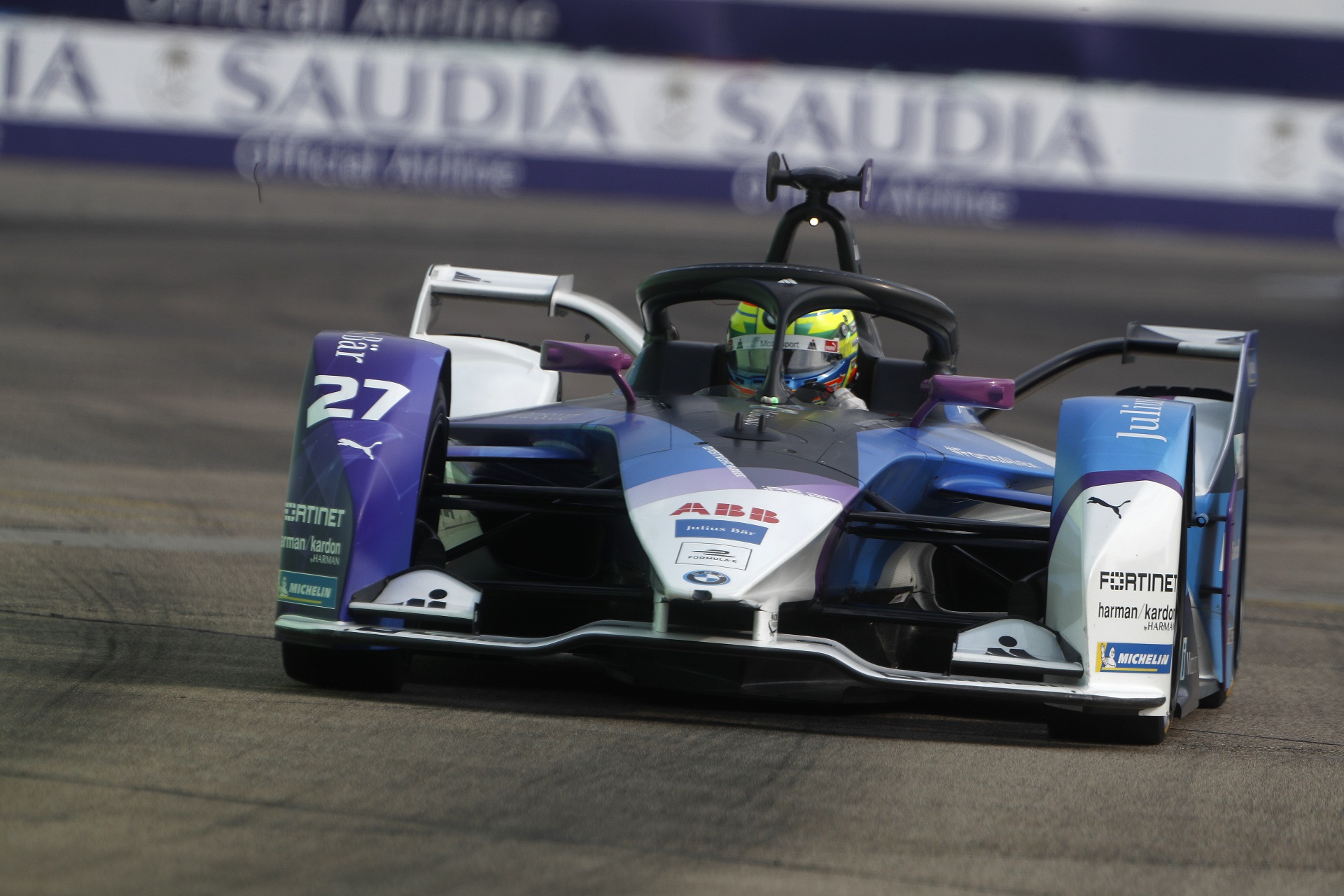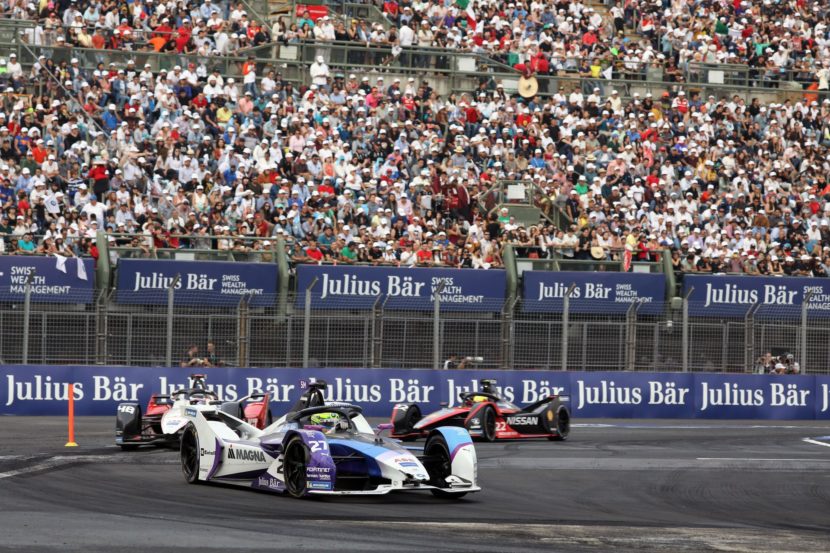I would be lying if I said that the end of the 2019-2020 Formula E season was not disappointing to me as a BMW i Andretti supporter. At the conclusion of the initial portion of the season (before the coronavirus-induced lockdown hit), the BMW Andretti team were a close second in the constructors’ championship.
Every race up to that point had showcased the potential of the BMW iFE.20 car: Alexander Sims’s pole position in Diriyah (race I), Sims’s dominating lights-to-flag victory in Diriyah (race II), Maximilian Guenther’s “coming-of-age” comeback victory in Santiago, Sims’s fantastic recovery drive from 18th on the grid to 5th in Mexico City, and Guenther’s failed bid for the victory in Marrakesh that still ended with a podium finish.
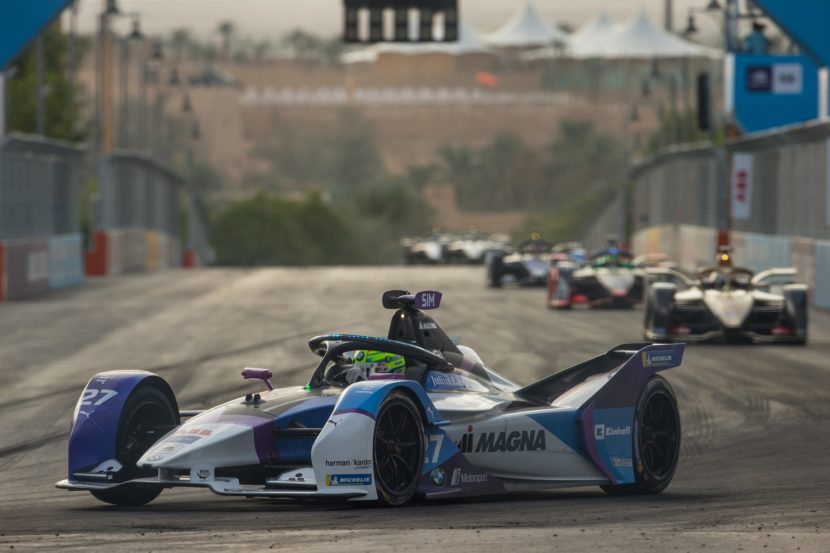
When the six-race finale in Berlin was announced, I was cautiously optimistic about BMW Andretti’s chances of ending the season strongly, possibly even with a drivers’ or constructors’ championship win. The circuit at the Berlin-Tempelhof Airport a few miles from the city center in Berlin had suited last season’s BMW iFE.18 quite well, with Sims and Antonio Felix da Costa (then a BMW Andretti driver) qualifying strongly and bringing it home in seventh and fourth place, respectively.
Instead, the team were only able to amass a total of 28 points from six races after scoring 90 points in the first five races of the season, dropping like a stone to 5th in the constructors’ championship. Both BMW and their operational partners Andretti will have to spend the offseason taking a long hard look: what went wrong?
Part I of my season summary will focus on the team as a whole, starting with a recap of the races in Berlin. Stay tuned for Part II and Part III, which will focus on the two drivers, detailing their individual seasons and analyzing their personal and career development.
Berlin ePrix — Introduction
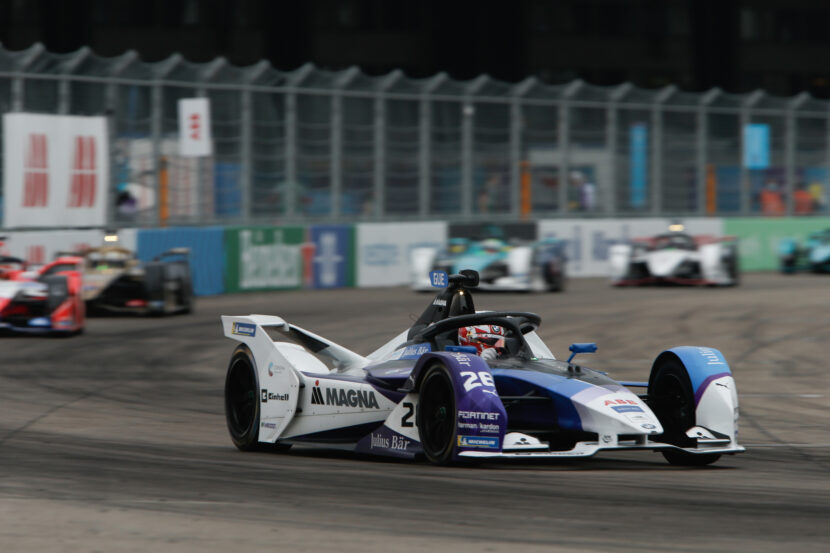
As one of Europe’s three iconic pre-World War II airports, the Berlin-Tempelhof Airport boasts a distinctive abrasive surface designed to slow landing aircraft down as efficiently as possible. Looking closely at the surface of the track, one can actually see all the intentional irregularities of the surface that are not present on standard paved street circuits.
Because of these unique characteristics of the Berlin ePrix track, it would fully make sense to expect that some Formula E cars would be better suited to running in Berlin while some would come off worse. The championship-leading DS Techeetah team was coming off of a heavily dominant performance in Marrakesh in the previous race where they nearly finished 1-2 en route to taking the constructors’ championship lead.
Perhaps a change in track surface would level out the playing field and even throw a wrench in the works with regards to the overall pecking order?
Races I and II
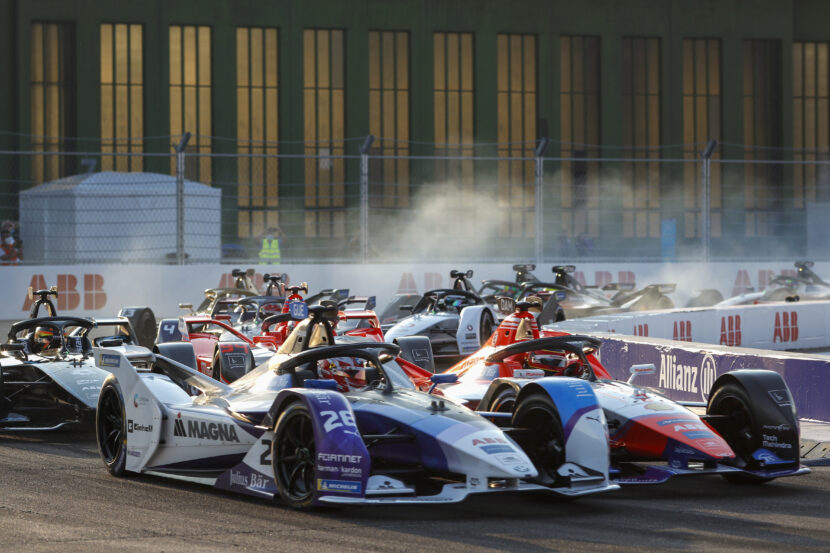
No. DS Techeetah carried on right where they left off, with da Costa setting the fastest overall time from Group 1 of qualifying (I am not sure this has ever been done!) on his way to pole position, with teammate Jean-Eric Vergne lining up beside him in second.
The race would have ended in an easy 1-2 for the Techeetahs as well had it not been for two safety car periods that resulted in Vergne overconsuming energy and falling down the order towards the end of the race. Guenther and Sims had decent recovery drives, finishing eighth and tenth on track after starting 12th and 16th. However, Guenther was disqualified for using too much energy in the race, resulting in a haul of just 2 points for Sims’s ninth place finish.
Race II brought even more disappointment for BMW Andretti. Max Guenther, starting from 11th, had a brilliant first lap, barging past Edoardo Mortara, then Jean-Eric Vergne, then Sam Bird in aggressive yet clean overtaking maneuvers to end the first lap in a promising eighth position.
However, it all went to waste when he and Bird collided a couple laps later when Bird tried to send one up the inside towards the end of the lap. With damage to his front wing and left front tire, Guenther was forced to pit for repairs and came out one lap down.
He would be the only car behind… Alexander Sims, who had to take a grid penalty and drive-through penalty as a result of changing the battery on his car before the race. As a result of his penalties, Sims was miles behind any other car straight from the start of the race. It would truly be a race to forget as Sims ended 19th and Guenther retired from the race.
Races III and IV

What a turnaround (both literally and figuratively) Race III would represent. The track was literally reversed, as we moved from running on the reverse Berlin-Tempelhof configuration to the standard counterclockwise configuration. And perhaps Guenther’s goose egg of points from the first two races would be a blessing in disguise, as he dropped out of the Top 6 in the championship and therefore took part in Group 2 of qualifying instead.
I will go more into detail on this race in Part II of this season review. In the end, Guenther qualified in an excellent second place and hounded pole sitter Vergne for much of the race before getting ahead of the Frenchman with 4 minutes (+1 lap) remaining. He was then forced to fend off Envision Virgin Racing’s Robin Frijns at the end of the race before winning by a mere 0.128 seconds.
A fantastic achievement! Sims would come home in 10th after qualifying 16th.
Unfortunately, that would be about all there was to write home about from Berlin for BMW Andretti. Race IV went terribly, starting with qualifying — Sims and Guenther lined up 16th and 21st on the grid. At the race start, Guenther would get boxed in in traffic at the start and careen into Oliver Turvey’s NIO in front of him.
This would retire him from the race on the spot and earn him a grid penalty for the next race. Sims was unable to get much momentum going either, finishing the race in a lowly 13th. The DS Techeetah team would walk home with both the drivers’ and the constructors’ championship wrapped up with two races to spare.
Races V and VI
For Races V and VI, a new Berlin-Tempelhof track configuration was used — the first six turns are the same as in the classic counter-clockwise circuit, but the straight coming out of Turn 6 goes farther before developing into the Turn 7 through 14 complex, then rejoins the original circuit with its last two hairpins.
Unfortunately, Race V was another dull affair for the BMW Andretti team. But it was a mildly intriguing race overall simply due to the fact that all four of da Costa, Sebastien Buemi, Lucas di Grassi, and Vergne were unable to set lap times in the group stage of qualifying after leaving their laps to the last second and getting burned by the clock.
They would all start from the back of the grid, but things weren’t much better for Guenther and Sims, who would only start a few spots up ahead in 13th and 15th respectively. Guenther made a poor start, dropping a few spots after the completion of the first lap, then was rear-ended in Turn 10 by the charging di Grassi, picking up a puncture and then retiring with damage. Sims had a relatively uneventful race in the midfield, eventually finishing 11th, just outside of the points.
Could BMW Andretti salvage anything in the last race of the season? The team’s and drivers’ championship standings kept dropping as the poor results filed in. Ultimately, this race would be a huge disappointment as well, especially for Sims. Sims started in 15th, three spots ahead of Guenther (who was in Group 1 qualifying), but absolutely could not get any forward momentum going.
After a slick start saw him rise to 12th, Sims’s progress stagnated and he was passed by Guenther and other cars around him as he languished to a mediocre 13th place in the race. Guenther, on the other hand, drove a handy race and utilized some well-timed Attack Mode ventures to carve his way up the field. He was running in 8th place and about to take 7th place from Robin Frijns with mere minutes left to go in the race when the Dutchman understeered clumsily at the Turn 15 hairpin, driving Guenther into the wall.
That pushed Guenther down to 12th, where he would finish, and forced Frijns into retirement with a puncture. Another goose egg for the BMW Andretti team, which saw their constructors’ championship standing plummet to fifth to end the season.
Analysis
So what exactly went wrong in Berlin? Well, it’s difficult to say. Other teams this season have had similar ups and downs during the season — the problem was that the DS Techeetah team only kept getting stronger and stronger all the while. As an example, the Envision Virgin team looked absolutely imperious in the first two rounds in Diriyah, with Sam Bird dominating the first race and showing very strong pace in the second race before retiring from a collision.
But after that, the team’s pace went away and Bird could often be found in the second half of the qualifying timesheets. Similarly, the Panasonic Jaguar team were unbelievably strong in qualifying in Santiago, absolutely blitzed the field in Mexico City, and demonstrated amazing race pace coming from the back of the grid at Marrakesh.
But they also struggled at Berlin, with Mitch Evans struggling to score points in a car that had battled for victories and should have been a championship contender. On the other hand, the Nissan e.dams team had a pedestrian start to the season before their package really woke up in Berlin, culminating in Oliver Rowland’s first career win and a rise to second in the constructors’ championship. And in the meantime, we have the DS Techeetah team, who were strong in every single race of the season.
What separated the DS Techeetah team from all the others? One unique thing about Formula E is its Qualifying format, where the drivers leading the championship are disadvantaged by having to head out first for group stage qualifying. This means that drivers entering each race in the Top 6 of the drivers’ championship standings often qualify lower than their true pace would indicate.
This was undoubtedly something that caught the BMW Andretti drivers out, as we can see when they qualified 18th and 20th for Mexico City from Group 1. But it was the same for all the other drivers and teams — even the Techeetah team struggled in Qualifying early on in the season.
As a result, a large part of Formula E is making one’s way up the grid safely and swiftly. As such, and I quote myself from an earlier article, “Managing a race from the front requires a vastly different skill set and mindset compared to slashing through the field from the rear end of the grid, and both are invaluable skills that a Formula E champion must master.”
Sims and Guenther claimed their three victories this season starting from the front row of the grid — fantastic achievements in and of themselves. But a true championship contender must also be able to salvage strong results when starting from further down the grid, and this was something that somewhat eluded the BMW Andretti team.
In comparison, da Costa from Techeetah was able to finish second in both Santiago and Mexico City despite qualifying 10th for both races. After that, the Techeetah car became monstrously good at qualifying so that was no longer an issue for them. But the overall feeling was that when a Techeetah car started further down the grid, it would be towards the front end in the latter stages of the race. The same could not always be confidently said about any other team, BMW Andretti included.
BMW Andretti had a strong package, no doubt, especially for the first half of the season. But what it really excelled at, according to multiple commentators and analysts, was energy efficiency. It was not necessarily the fastest car over a single lap, and may not have been the best at getting the tires into the operating temperature window.
But the energy efficiency of the BMW iFE.20 allowed its drivers to maintain a good blend of speed and energy conservation, which was especially useful when controlling the race from the front. However, that was not particularly useful when going for a one-lap maximum speed lap, resulting in inconsistent Qualifying performances. I feel that this was the reason behind the BMW Andretti team’s oscillations in form, and why they could be so dominant one week and nowhere the next.
Now we move on to the race pace of the iFE.20. There are three main points I would like to touch on here. The first matter I would like to clarify is the dual meaning of the term “race pace.” Race pace out at the front of the race versus race pace in the midfield pack are two very different concepts.
The reason for this is that running at the front of the pack protects you from a lot of action that would otherwise happen if you were in the midfield. As such, having good race pace at the front of the pack is mostly about speed, consistency, and energy conservation, while good race pace in the midfield is also heavily reliant on Attack Mode strategizing, overtaking, and defending. As a driver in the midfield, there are so many factors to worry about, and quick
and efficient overtakes are paramount to maintaining good race pace. On the other hand, overtaking is not the most important aspect of maintaining good race pace at the front of the field. Overtaking is more of an inevitable consequence of having good speed and higher remaining usable energy.
This brings me to my second point — overtaking. The DS Techeetah team excelled at overtaking during the race, perhaps due to the superior maximum pace of their car. In the midfield, it can be painfully difficult to make overtaking maneuvers stick, as all the cars are so close in terms of pace.
Putting the first and second points together, we can see two particularly obvious examples of this phenomenon. In the second race at Diriyah, Alexander Sims was running in the lead for the entire race, easily pulling away from his opposition. But Max Guenther, who had started the race in ninth place, was not even able to complete a single overtaking maneuver until much later.
The roles were reversed in the third race at Berlin, where Guenther was up towards the front of the field, pushing the race-leading Techeetah of Jean-Eric Vergne so hard that it seemed obvious that the BMW Andretti was the quickest car in the field. But Sims was languishing in the midfield in the meantime, and his BMW iFE.20 looked remarkably average in pace. In both cases, it was not that one driver was vastly more skilled than the other — it was just that the car was put in different situations.
The final point I would like to touch on is simple — luck. You don’t succeed in racing without a bit of luck, and it seems like the BMW Andretti team definitely had their fair share of bad luck in the races when they were coming back from the rear-end of the field. For example, Sims and Guenther were taken out on the last lap of the race in Marrakesh and Berlin VI, respectively, from positions that would have given good hauls of points.
Of course, every team has its unlucky moments, but the point here is that the BMW iFE.20’s race pace was not woeful at all when running in the midfield — there were races where the driver made it comfortably back into the points-paying positions, but lost out due to circumstances outside of his control.
In all, many factors may have contributed to the BMW Andretti team’s poor run of form in Berlin. In addition to the ones detailed above, it is possible that the car this year did not work as well with the abrasive track surface, and would have worked better on a standard racetrack such as the ones that we raced on in the first half of the season.
The coronavirus lockdown may also have made its impact, as many factories in Munich and the United States had to close down. Thus, we should not be so quick to write off the 2019-2020 as a disappointment, as the car, drivers, and team all showed great promise — even more so than last year.
Every season is an opportunity to learn for this young team with its relatively inexperienced drivers, and I am confident that the team will come back even stronger next year. This season gave us BMW fans several moments to cherish — now the team must build on their successes and learn from their mistakes to develop into a real championship powerhouse next season.


